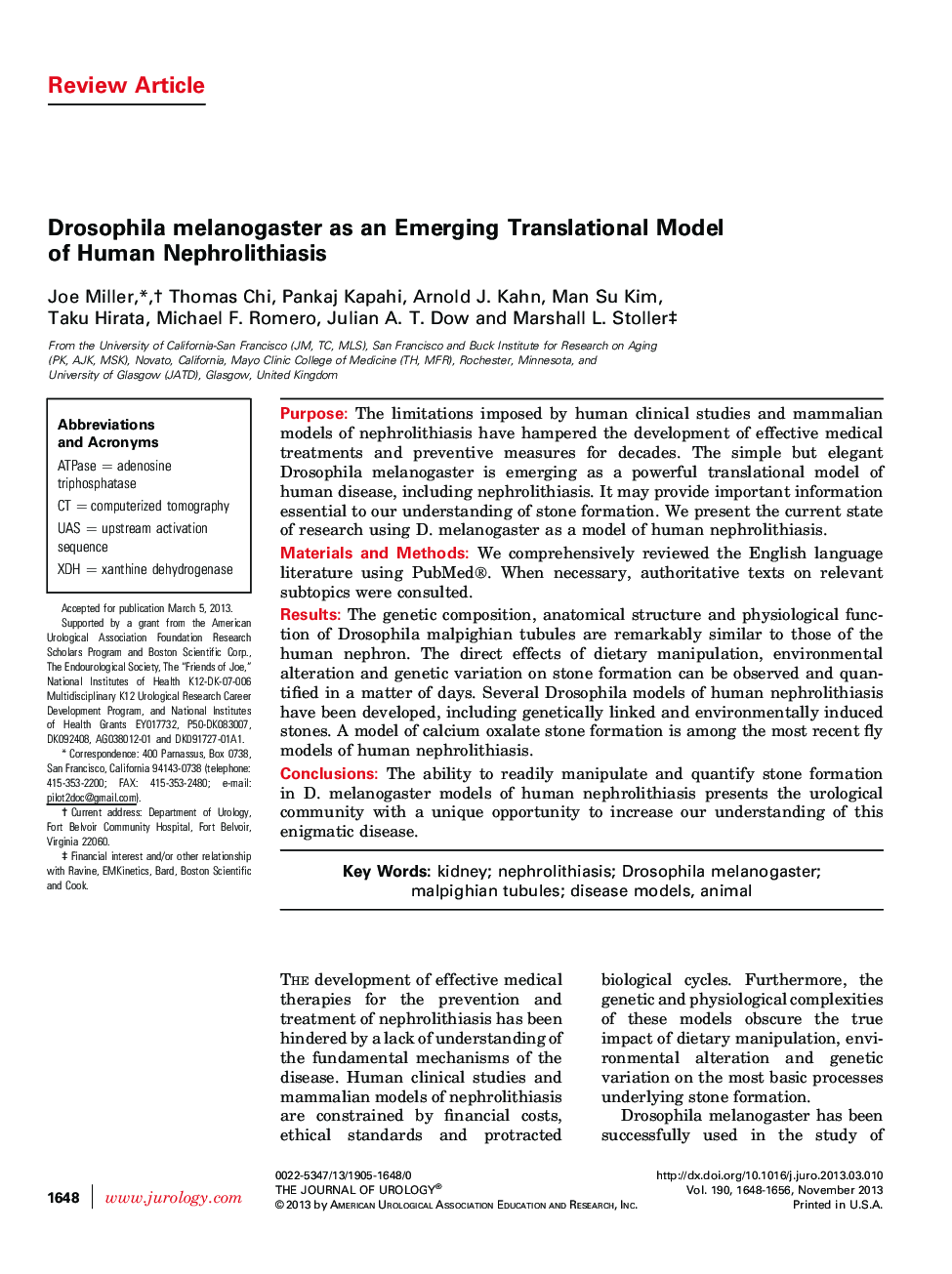| Article ID | Journal | Published Year | Pages | File Type |
|---|---|---|---|---|
| 3861797 | The Journal of Urology | 2013 | 9 Pages |
PurposeThe limitations imposed by human clinical studies and mammalian models of nephrolithiasis have hampered the development of effective medical treatments and preventive measures for decades. The simple but elegant Drosophila melanogaster is emerging as a powerful translational model of human disease, including nephrolithiasis. It may provide important information essential to our understanding of stone formation. We present the current state of research using D. melanogaster as a model of human nephrolithiasis.Materials and MethodsWe comprehensively reviewed the English language literature using PubMed®. When necessary, authoritative texts on relevant subtopics were consulted.ResultsThe genetic composition, anatomical structure and physiological function of Drosophila malpighian tubules are remarkably similar to those of the human nephron. The direct effects of dietary manipulation, environmental alteration and genetic variation on stone formation can be observed and quantified in a matter of days. Several Drosophila models of human nephrolithiasis have been developed, including genetically linked and environmentally induced stones. A model of calcium oxalate stone formation is among the most recent fly models of human nephrolithiasis.ConclusionsThe ability to readily manipulate and quantify stone formation in D. melanogaster models of human nephrolithiasis presents the urological community with a unique opportunity to increase our understanding of this enigmatic disease.
